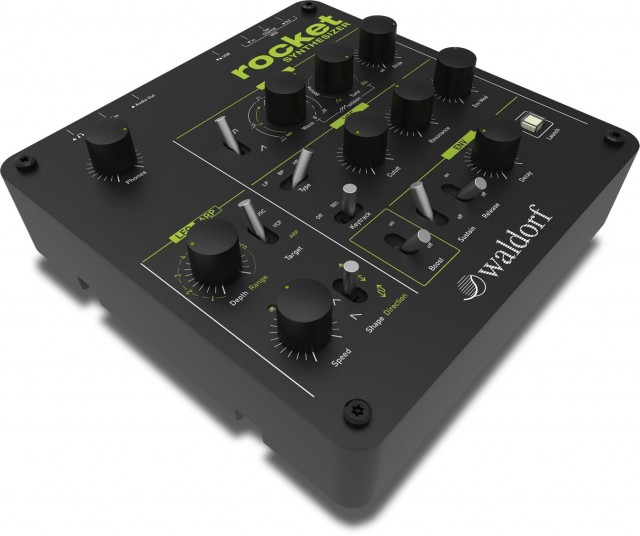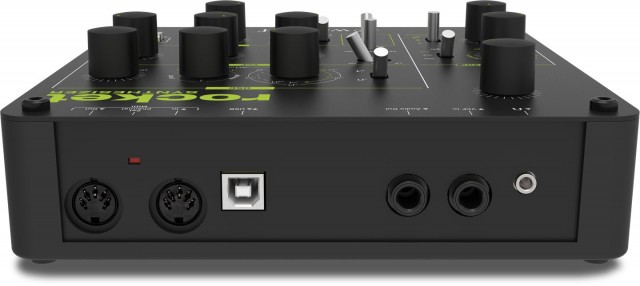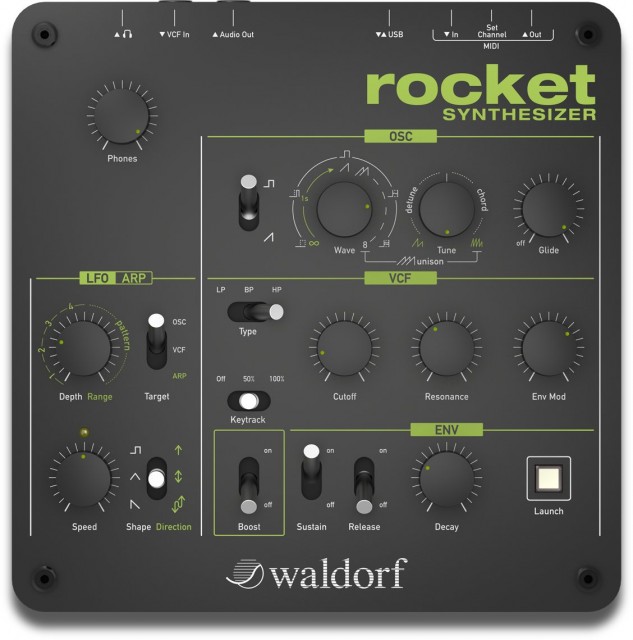
An affordable compact synth with some bite – and a surprising amount of features packed into a small amount of space. This is no single scoop of vanilla, it appears; we’ll be ready to go hands on with it here in Germany soon. Photos courtesy Waldorf, click for biggie size.
Germany may have a reputation, deserved or not, for staid, conservative engineering. Waldorf’s Rocket isn’t that. Yes, this new desktop synth has a multi-mode analog filter and the usual complement of MIDI, envelope, and modulation controls. But with a “Booster” circuit to make the sound more aggressive and a full eight oscillators in unison/chord mode for some thick super saws, this promises to be a machine with some teeth. And at €244 (€205 without VAT), due next month in advance of Frankfurt’s Musikmesse trade show, it’s the latest desktop synth that says you can get a lot of sound value out of hardware.
It’s also friendly, with USB power and USB MIDI (in addition to MIDI DIN), a built-in arpeggiator, and lots of hands-on controls (which Waldorf says are “high-end” – look forward to trying them).
We just have a lot of questions coming up when we see Waldorf in April. The Pulse 2 analog synth is also promised for “spring,” so it’s a question of actually seeing these instruments in the flesh and hearing more about how the two compare.
Sonically, I’m definitely intrigued. There’s no absence of features or options to keep sounds spicy. Updated: Yes, these appear to be digital oscillators, which would differentiate this from the Pulse 2 with its analog oscillators. But having eight digital oscillators opens up some sound possibilities. (The puzzling thing is this “eight” business, of course, but that seems to be only in unison or chord mode rather than dedicated oscillators.) In the layout of the controls, however, it appears there are some unusual decisions to fit everything into that square, and those may not suit everyone – at least based on a first glance. A number of knobs and switches do double duty, and the Sustain and Release envelope parameters are switches rather than knobs. (One of those, I could see, but with two, and no attack setting, creating envelopes seems unnecessarily tricky.) I’m eager to try this out to see what it’s actually like to use. You can bet I’ll be visiting Waldorf in April when CDM heads to Musikmesse.
And with VCF input and all these built-in options, this seems ready to prove you can have a non-boring synth at a budget price and in a compact size.
(Oh, and here’s a note to KORG: look, you can even set the MIDI channel. Cough.)
Analog multimode-filter (VCF) with Low Pass / Band Pass / High Pass
VCF-input
Highly flexible oscillator-section with pulse width modulation and hard sync
Up to 8 oscillators in unison for chords or Ultra High Density Sawtooth
Low Frequency Oscillator (LFO) for modulation
Envelopes for VCA, VCF and Sync
Booster circuit to generate aggressive sounds
Arpeggiator with different rhythmic patterns
Glide
USB powered
MIDI in and out
Extensive control panel with high-end pots and switches
Control via MIDI and USB
MIDI clock sync
Line output
Loud headphone output
Launch key for easy pre listening
Made in Germany
More pics:

